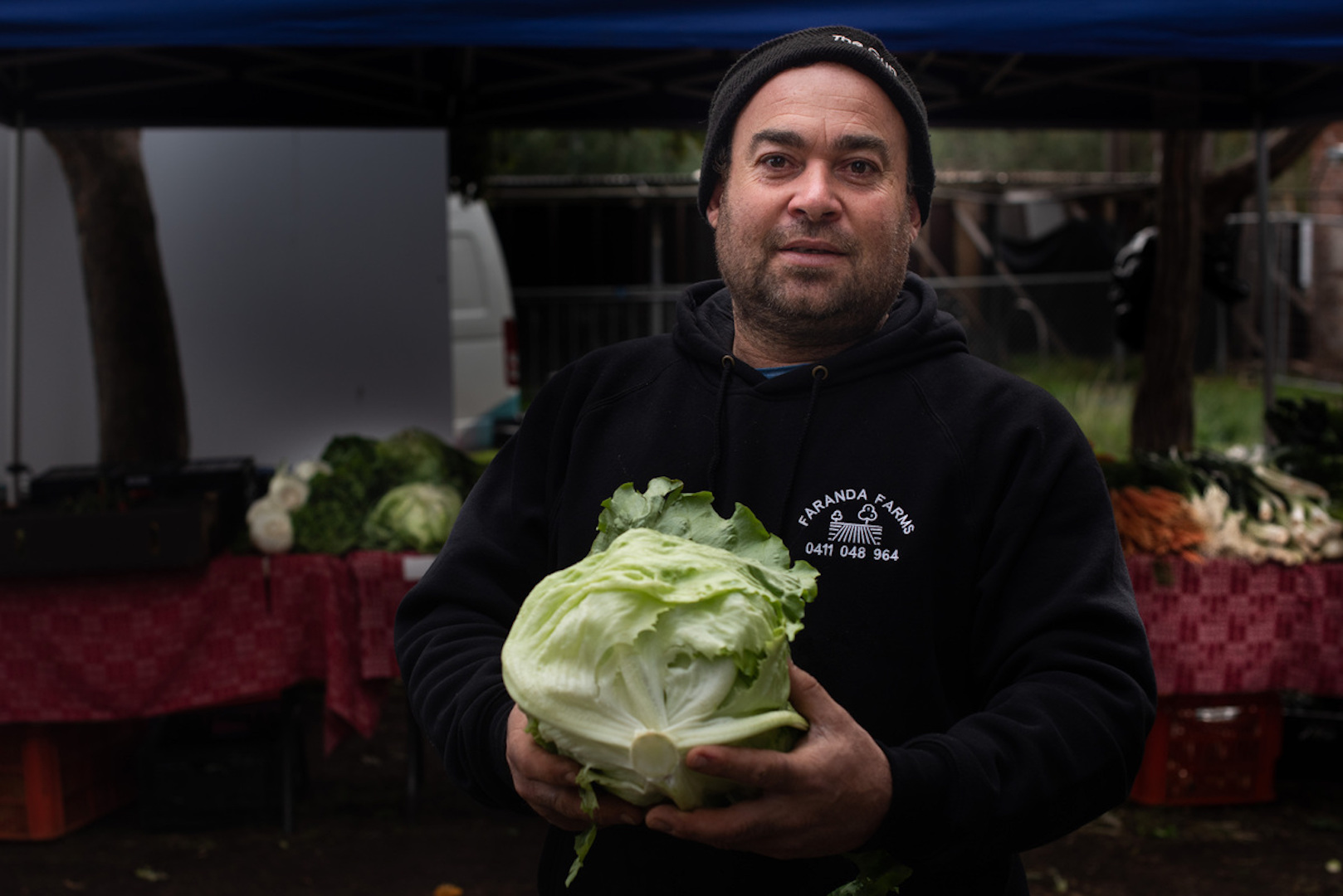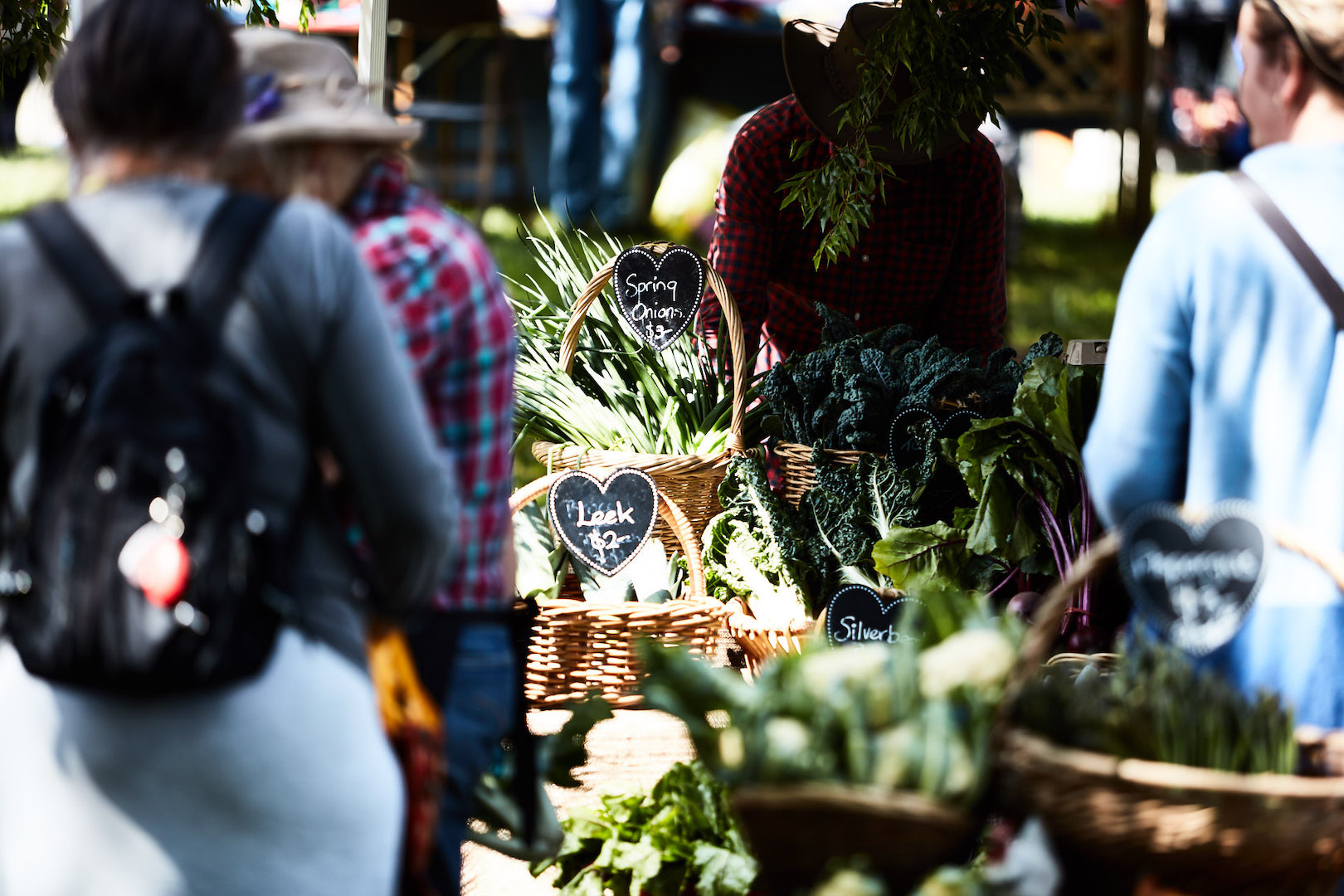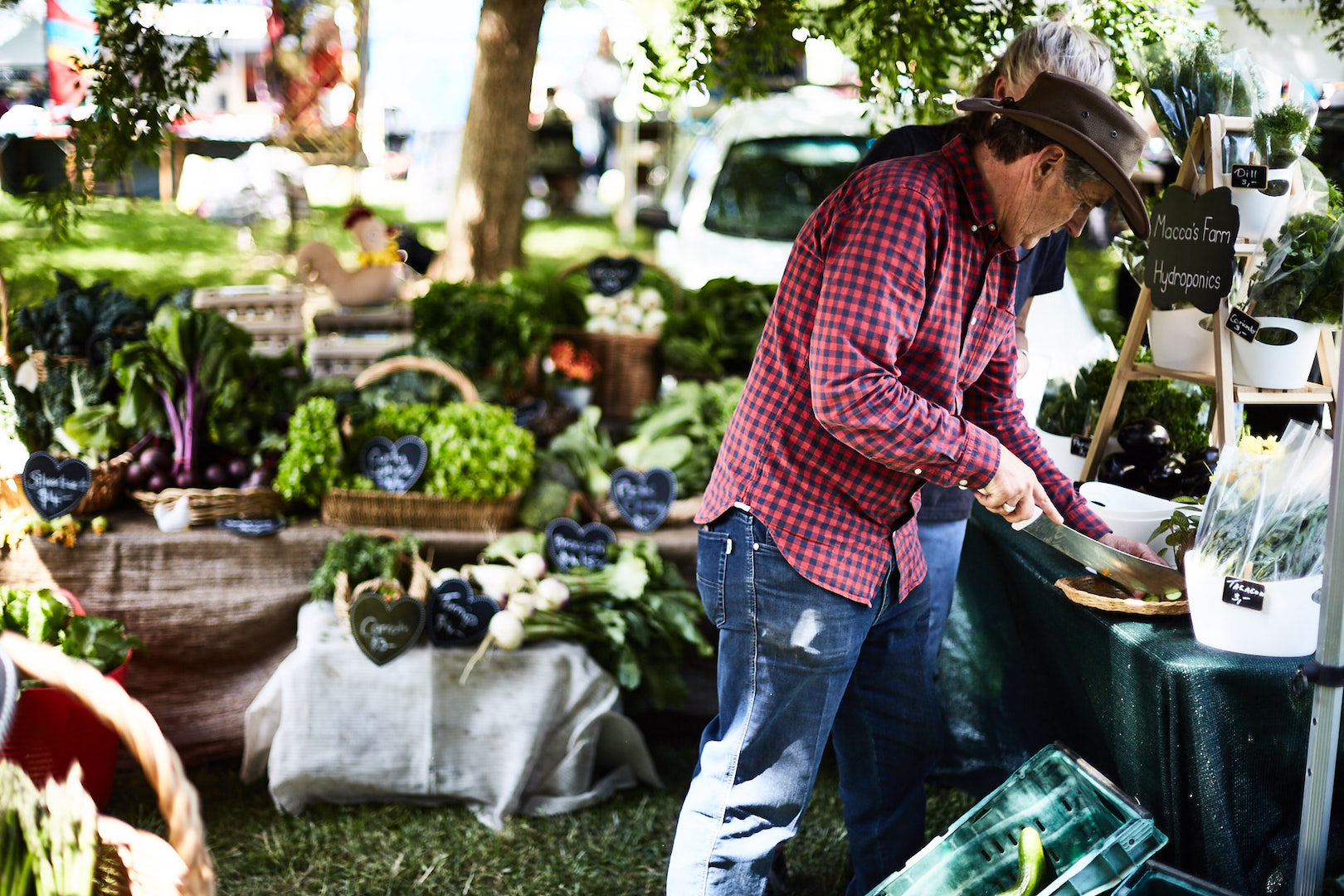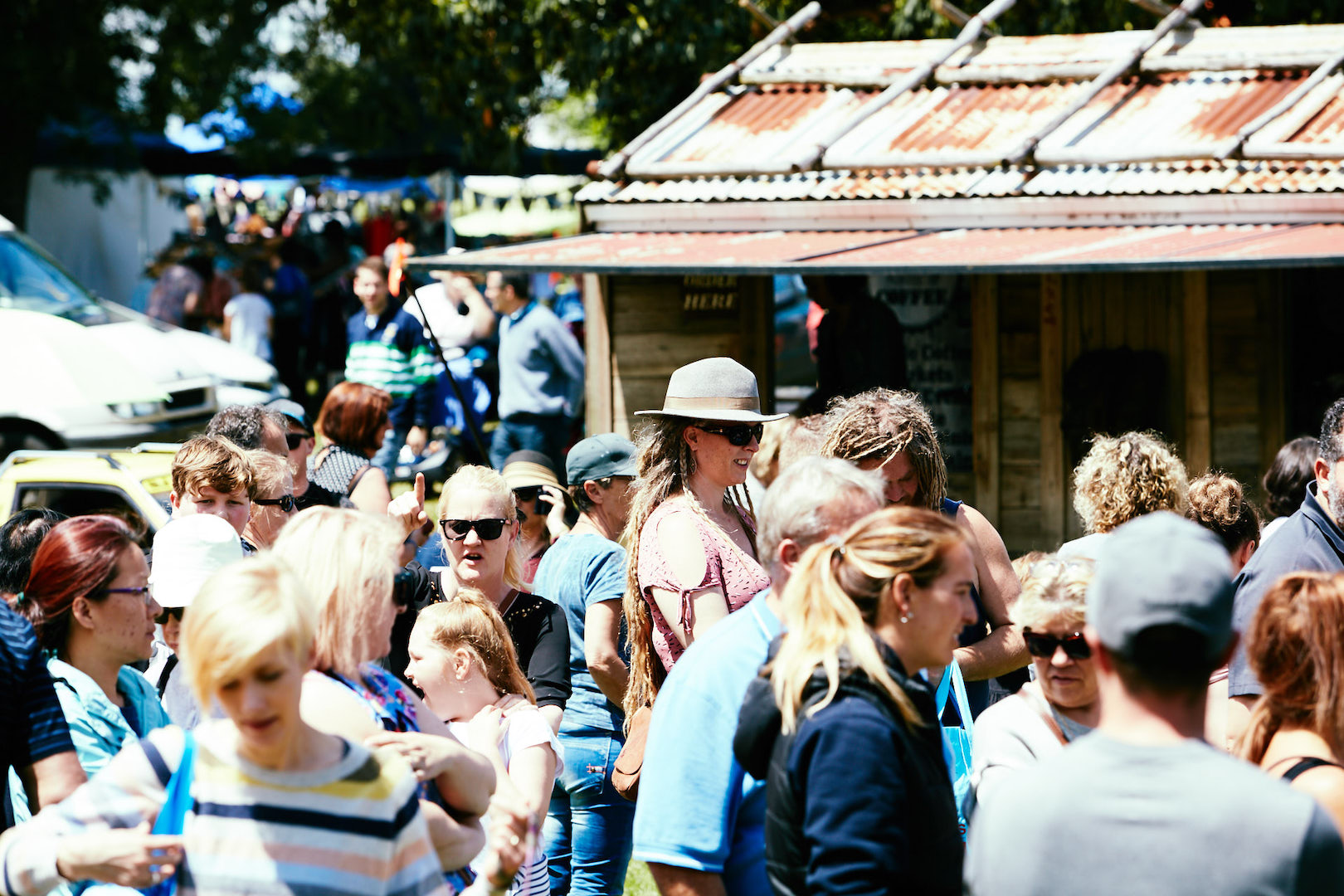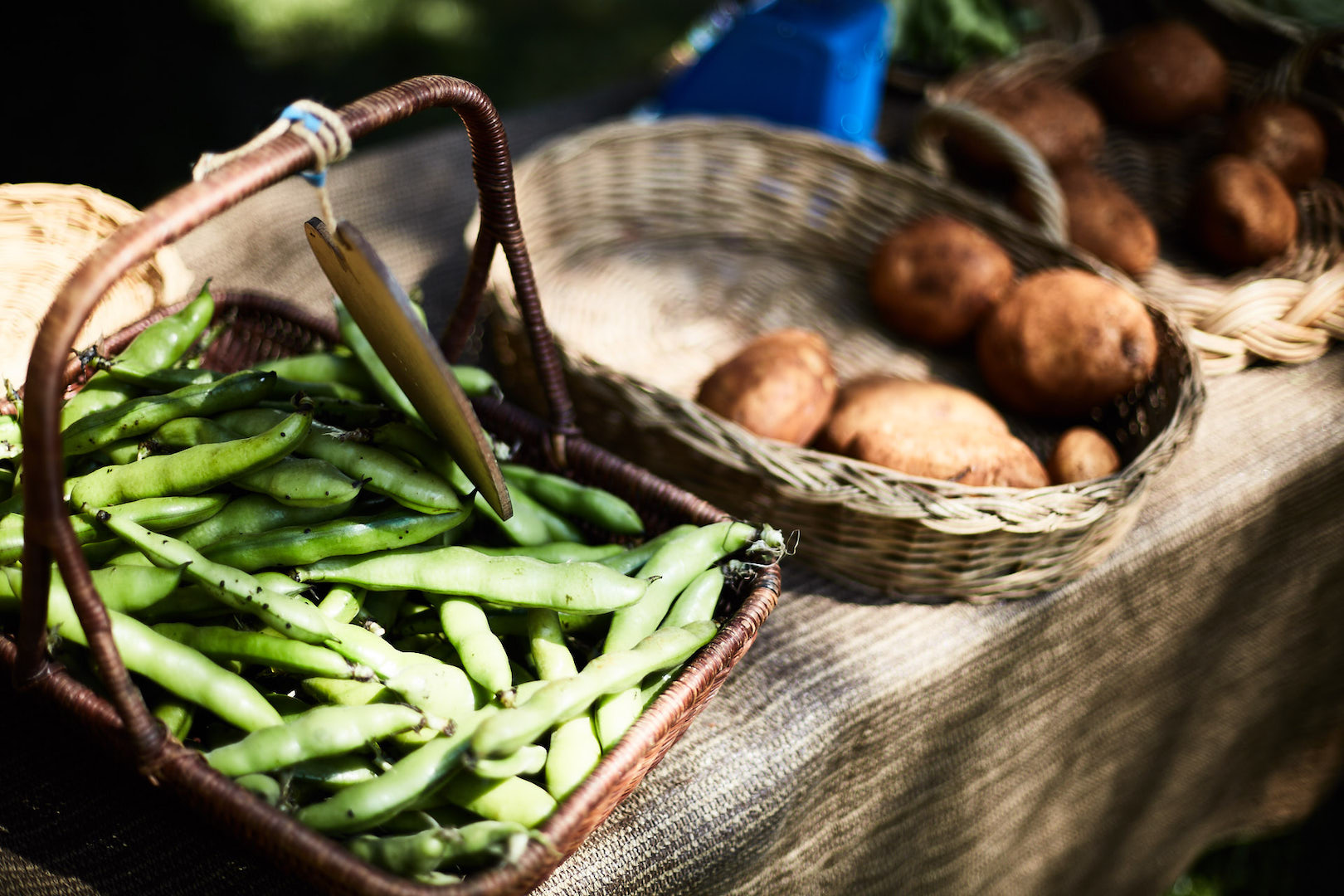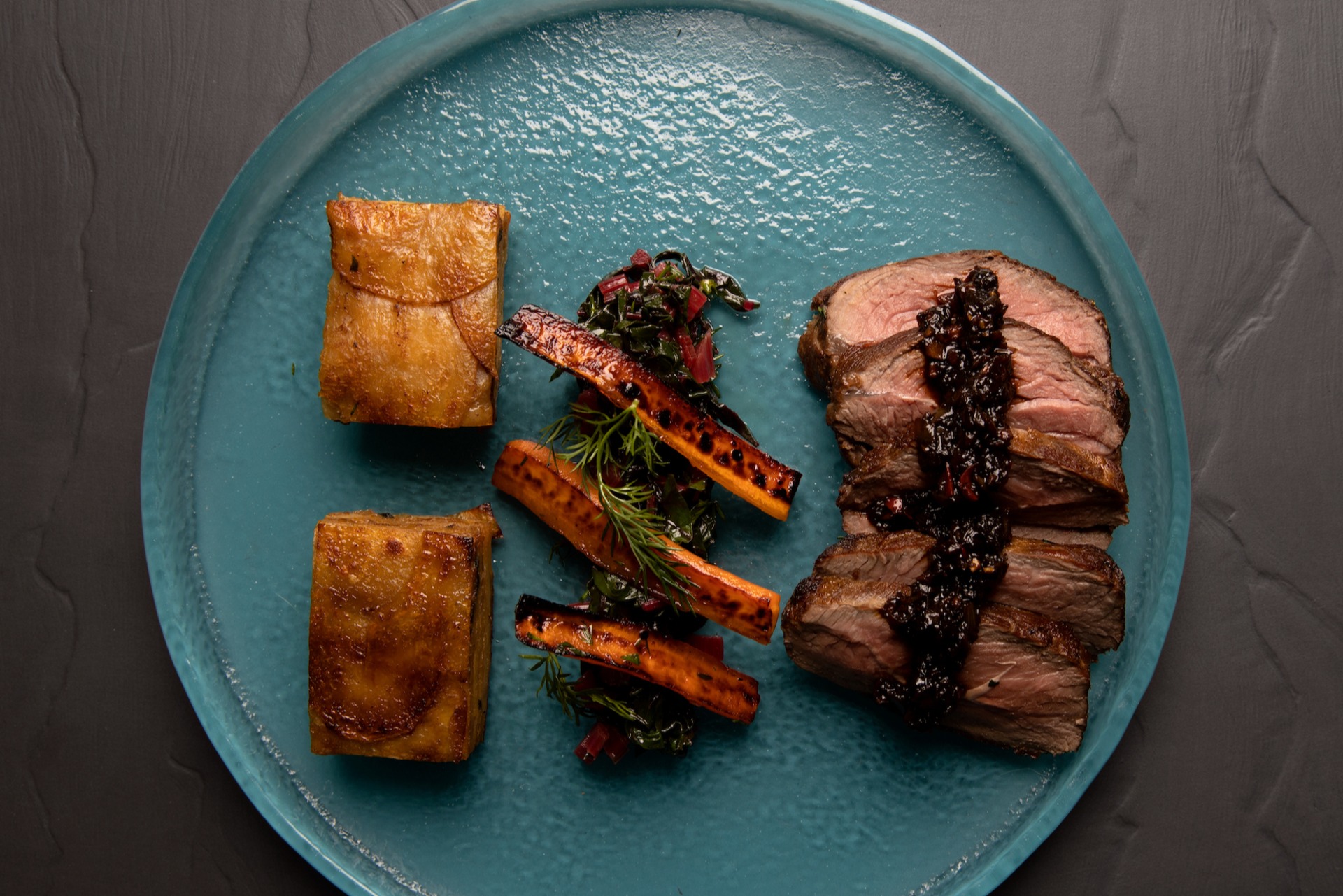Words by Richard Cornish
South Werribee vegetable farmer Marcello Faranda holds a head of iceberg lettuce at the Abbottsford Farmers Market. Harvested it the day before so the lettuce is fresh, heavy and crisp. He is selling it for $6. In a greengrocer a kilometre away an iceberg trucked 700km from South Australia, its outer leaves are wilting, and it feels loose and light. It is selling for $9.99.
A few months back icebergs were selling for around $3.50 in the supermarket. Four dollars in the farmer’s market. Since then, a few things have changed. Firstly, the growing season in the south of the state has come to an end. Then La Nina influenced rainfall patterns and flooded large swathes of the flat Northern New South Wales and Queensland vegetable farming areas.
This still sodden ground sees farmers unable to harvest ripe crops or replant new crops. At the same time, the Ukraine war erupted. A large amount of potash used for fertiliser is manufactured in Ukraine. The embargo on oil and gas exports from Russia has caused an energy crisis which has seen diesel to fuel tractors and trucks jump 80% despite a cut in Federal excise. This has seen synthetic nitrogen fertiliser, made using gas and oil, has risen in price. It is presently around $1300 a tonne. Those in the industry are budgeting for it to be $2500 a tonne next year. Then the rise in the cost of electricity to power pumps and run cool rooms has affected northern farmers. This is an immaculate, impeccable and perfect storm.
But the hike in fresh food is not evenly spread. A very short drive from the farmer’s market is one of the big two supermarkets. They don’t have an iceberg in stock. There seems to have been a run on the other varieties with a handful of bedraggled double pack cos lettuce remaining, with an asking price of $3. It may have come from East Gippsland, perhaps further afield. Back at the farmers market you can buy an organic cos, freshly picked from a farm 40km away, for the same price. This disparity between the higher supermarket fresh food prices and the lower prices compared to the farmers market the prices are high. Eggplant $8.90 compared to $8 at the market. Cauliflower $4.90 compared to $4. Broccoli $9.90 at the supermarket, $6 at the farmer’s market. When it comes to organic produce the difference is even greater. At the big supermarket, a medium organic cabbage is $10 at the Peninsula Fresh Organics stall they are $6. Seven-dollar supermarket celery versus those at the farmer’s market, organic and freshly picked selling for just $4.
“If it’s grown locally and it’s in season then it is going to be cheaper,” says Natashia Shields from Peninsula Fresh Organics at Baxter, one hour south of Melbourne. “Our produce is cheaper because we are organic,” she explains.
We make our own compost, so we don’t have the rising cost of synthetic fertilisers. We cut the product the day before so there are no storage costs. We are cool climate so we don’t need all that energy to chill the veg to keep to it fresh.
Her nearest outlet is a few hundred metres away at the farm gate in Baxter. Their farm stall at the Dandenong Market is 22 kilometres away. The city markets are just over an hour away. “This means the customer is not paying for diesel. We also don’t have the added costs of distributors or agents. We have this great soil here and our other organic farm at Barham and we run them regeneratively. Our biggest cost is labour”
“We have a real problem with our food system,” says Tammi Jonas, Central Victorian regenerative farmer and President of the Australian Food Sovereignty Alliance. She and her cohort promote a diverse system of local food production where the food we eat as a community is grown locally and regeneratively so that energy shocks, fuel crises, and fertiliser shortages have a lesser impact on the availability and accessibility of clean, fresh healthy, fair food.
“The farmers in our movement have been charging the real price of produce,” she says. “It has always been more expensive than cheap food based on cheap fuel and cheap fertiliser,” she says. “We are low input, and any inputs are local,” she says referring to spent grain from local breweries used to feed pigs and farm-made fertiliser or animals’ manure fertilising fields and crops. “We also need more regional food processing infrastructure such as abattoirs, grain mills, dairy processing, boning rooms,” she says, “It is happening. But it needs to happen faster.”
Back in the Abbotsford farmers market Marcello Faranda stands proud of his $6 a lettuce price. “It costs so much to produce food,” he says. “But we are not going to put prices up. We don’t want to crucify our customers. Good food needs to be for everyone. Not just who can afford it.”
We wish to acknowledge the traditional owners of this land and to pay our respects to their Elders, past and present.
